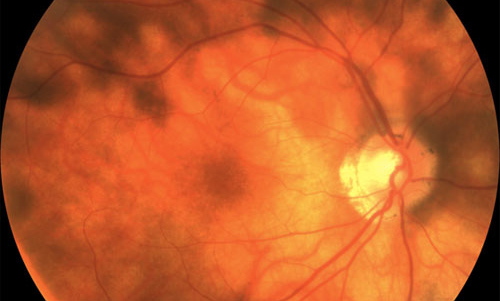
 |
Birdshot Retinopathy |
 |

Birdshot Retinopathy | ||
The term birdshot retinopathy was adopted because it appears as creamy round or oval spots, which are lesions scattered in the middle periphery of the retina, and resembles bird shot ammunition fired from a shot gun. | ||
| ||
The cause for birdshot retinopathy is not known. We do know there is a common link in most cases to an antigen called the HLA A29 that may be identified by a blood test. | ||
| ||
If you have birdshot retinopathy, you may notice floaters increasing, blurred vision, impaired ability to distinguish colors and night blindness. Birdshot retinopathy may not become apparent until over 50 years of age. It may include swelling of the macula and optic disc, which further impact vision. | ||
| ||
Birdshot retinopathy is diagnosed by a retinal examination that may or may not include fluorescein angiogram and a retinal scan. Over 90% of persons with a positive result for the HLA A29 lab test have birdshot retinopathy, and vice versa. | ||
| ||
Birdshot retinopathy may go into periods of remission, but often returns with flare ups. The individual symptoms are treated. Steroid medications may be given when you are first diagnosed, and subsequent treatments include eye drops, injected medications and possibly surgery, depending on the symptoms you have present. | ||
| ||
There is no known way to prevent the onset of birdshot retinopathy. | ||
| ||
 |
 |
|
